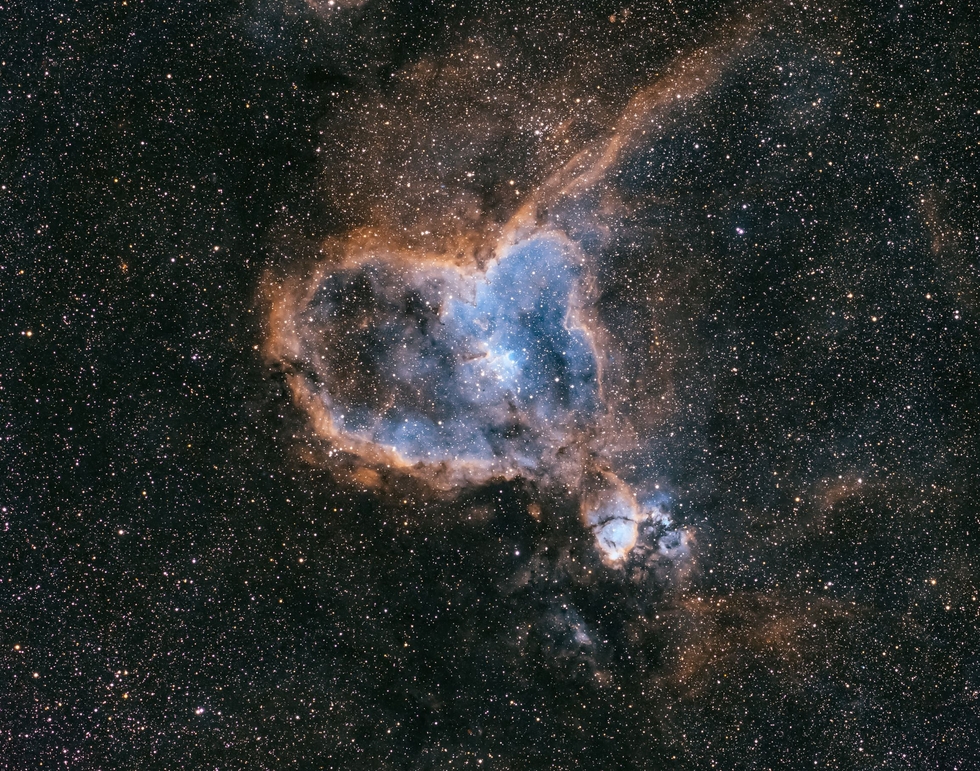Heart Nebula
Heart Nebula
IC 1805 (also known as the Heart Nebula or W4) is a diffuse nebula associated with an open cluster in the constellation Cassiopeia, near the Giraffe boundary. It can be detected about 6 degrees southeast of the star ε Cassiopeiae, but it can also be detected starting from the Perseus Double Cluster and moving about 4-5 degrees in a north-northeast direction; It pairs with another large nebula, known as IC 1848. To be able to detect it, you need a telescope with a large diameter, not so much because of its size, since the nebula is quite large, but because of its faintness. A long-exposure photo or a CCD camera, on the other hand, reveals the object quite easily. The entire complex of nebulae visible in this area is circumpolar from most regions of the northern hemisphere; The best months for its observation are from October to April. It is a very large HII region, whose distance is estimated at 7500 light years from us; Its main feature is the presence of two large, apparently empty areas, of different sizes, which make the nebula look like a "heart". Inside there is a system of small, poorly concentrated open clusters, responsible for ionizing the nebula. The most notable of these is Melotte 15, which contains some stars about 50 times more massive than the Sun, plus smaller ones, and a microquasar ejected millions of years ago.
This and nearby IC 1848 form a large nebulous complex known as the W3/W4/W5 complex or "Heart and Soul"; the "heart" is IC 1805, while the "soul" is represented by IC 1848.
This and nearby IC 1848 form a large nebulous complex known as the W3/W4/W5 complex or "Heart and Soul"; the "heart" is IC 1805, while the "soul" is represented by IC 1848.
SPECIFICATIONS
Telescope
SPA-1-CCD
Camera
QHY 600M Pro
Location
IC ASTRONOMY OBSERVATORY, SPAIN
Date of observation
22-09 / 12-22-10 2020
Filters
SHO
Processing
Pixinsight and Photoshop
Credits
Credit Sauro Gaudenzi / Data Telescope Live


